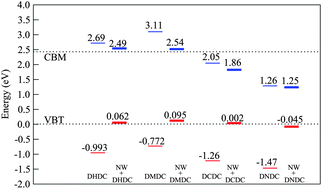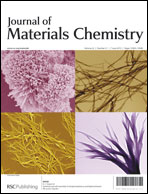Electronic structure and band gap engineering of CdTe semiconductor nanowires
Abstract
The structural and electronic properties of (10![[1 with combining macron]](https://www.rsc.org/images/entities/char_0031_0304.gif) 0) faceted CdTe
0) faceted CdTe ![[1 with combining macron]](https://www.rsc.org/images/entities/char_0031_0304.gif) 0) CdTe
0) CdTe ![[1 with combining macron]](https://www.rsc.org/images/entities/char_0031_0304.gif) 0) CdTe surface. The surface strain was eliminated by passivating the dangling bonds with hydrogen atoms. The
0) CdTe surface. The surface strain was eliminated by passivating the dangling bonds with hydrogen atoms. The ![[1 with combining macron]](https://www.rsc.org/images/entities/char_0031_0304.gif) 0) surface of the hexagonal unpassivated CdTe
0) surface of the hexagonal unpassivated CdTe


 Please wait while we load your content...
Please wait while we load your content...